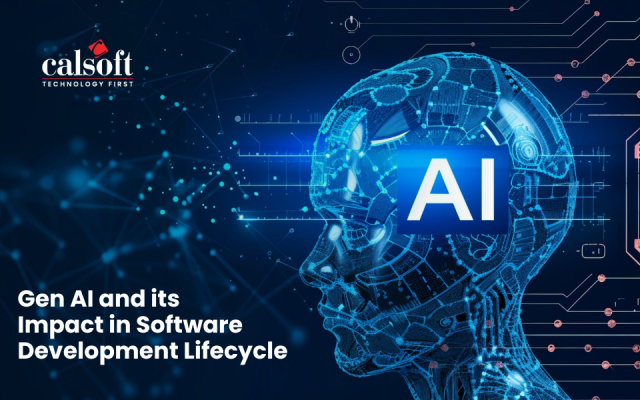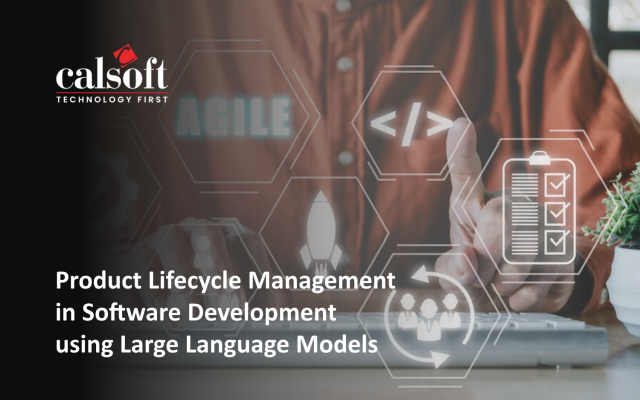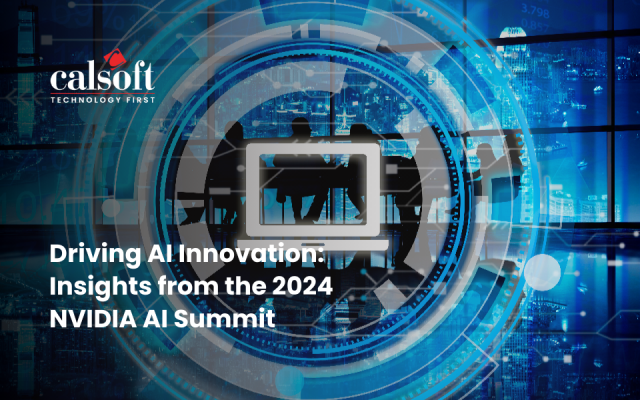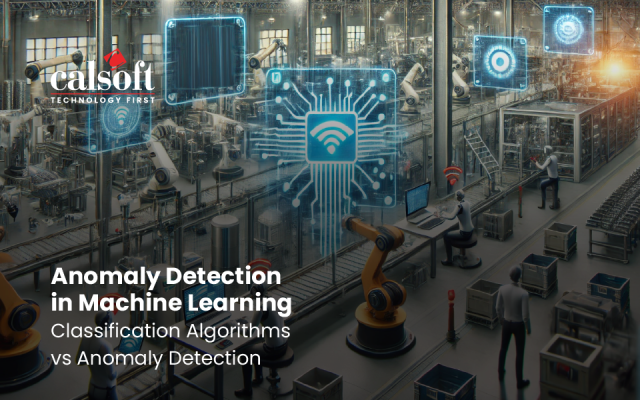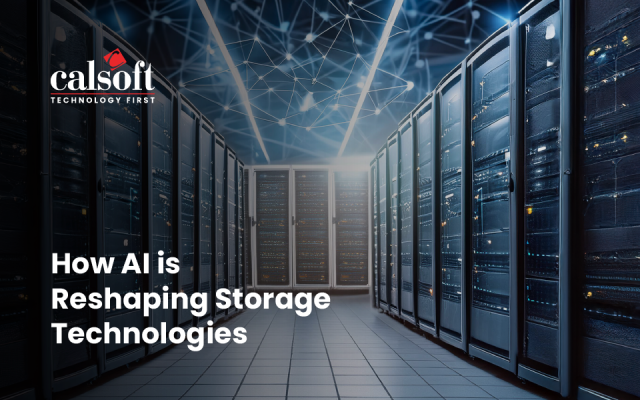In the highly competitive marketplace, customer experience surfaces as one of the key differentiators. Today, customers are more inclined toward a seamless and personalized experience. As a result, businesses are rapidly banking on AI-powered solutions, to not just improve the CX quotient but also gain a competitive edge.
Turning to technologies like Artificial Intelligence (AI), Machine Learning, and Natural Language Processing, businesses are making the best use of them to anticipate customer needs, understand customers better, deliver personalized experiences and above all drive customer loyalty and satisfaction. However, we cannot deny the fact, that technological advances made in areas like AI and ML have boosted Customer Experience (CX) to new heights.
In the digital era, customers are empowered. Thanks to the unprecedented connectivity via digital platforms, social media, and mobile technologies. We have seen a paradigm shift ever since AI and ML have impacted how businesses approach customer interactions by integrating chatbots and real-time analytics. Automating routine tasks, predicting customer needs, and personalizing interactions have helped enable more efficient and proactive customer engagement.
We have already spoken about how the power of Customer Experience Engineering (CXE) can impact business growth and revenue in our previous article. In this article, we intend to provide our readers with insights on how AI and ML integration into CX engineering can enhance customer interactions. But before that, it is essential to understand where exactly these technologies can impact and enhance customer interactions. Knowing the customer touchpoints and the customer’s journey while purchasing can help integrate and leverage AI and ML technologies at the right place and time for better CX engineering.
The Importance of Customer Touchpoints and Journey
Gartner forecasted that by 2025, 80 percent of customer service and support organizations will be applying GenAI in some form to improve agent productivity and CX. For customer experience to be a success, businesses are known to concentrate on its four components – brand, product, price, and service. And the most important of it all is how the business delivers for its customers – especially the products and services it provides.
It was the COVID-19 pandemic that proved to be the test of how businesses could connect with their customers seamlessly. It was during these testing times, that soon led to a series of technology developments that centered around customer experience – based on the feedback that customers engaged in with their suppliers.
In the commercial world, these are known as touchpoints – the individual transactions through which customers interact with parts of the business and its offerings, in a customer’s journey. These touchpoints could also include bringing a new customer on board, resolving a technical issue, or upgrading a product.
For all this to take shape and gain a competitive advantage, businesses need to leverage AI and ML technologies to speed up time-consuming tasks, build integrated process flows, and gain insights into customer trends.
There are certain capabilities crucial to enhancing CX and integrating AI in CX can realize the following key benefits as shown in the image below:
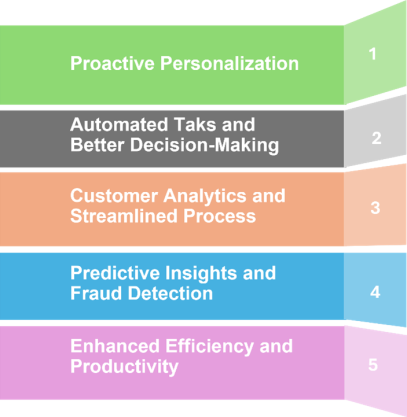
- Automation of Repetitive Tasks: With integration of AI data can be managed intelligently and social media and interactions can be monitored and tracked improving business operational efficiency. Automation of certain repetitive tasks takes the workload off the staff to deal with more critical responses.
- Proactive Personalization: AI can help customize CX based on customer information. Generative AI can further help an organization’s staff answer customer queries efficiently and effectively. Besides, AI chatbots are already in use to help answer customer queries. Further, given GAI capabilities, algorithms can now anticipate user needs and thus direct and streamline user experience based on dynamic user data thus ensuring a more intuitive and efficient customer experience. AI algorithms analyze vast amounts of data to understand individual preferences and behaviors, enabling hyper-personalized recommendations and communications.
- Design Flow of the Customer Journey: Before all the customer personalization happens, designing the flow of the customer’s journey is very essential. Leveraging ML algorithms to predict the next step to enable the customer’s progress—constantly testing, always learning, and fueling decisions about how the interaction works is crucial for a seamless customer experience. This leads to crafting what is known as “intelligent experience engines”. Collaboration of a variety of skills from different disciplines leads to a cohesive customer experience design, which delivers the experiences customers demand, across all key interactions and channels.
- Predictive Insights: AI and ML algorithms help to use the knowledge about where a customer is in a journey to deliver them to the next set of interactions. Businesses need to build algorithms for use in engaging customers in ways that are most appealing to them. Here companies need to mine their data and insights about customers to figure out what other services they might appreciate. Machine learning models predict customer needs and behaviors, allowing brands to proactively address issues and enhance proactive customer service.
Against this background of the importance of customer experience and how AI and ML technologies have been integrated to deliver a seamless customer experience, the touchpoints of these AI technologies are also crucial for customer experience engineering.
Why Customer Experience Engineering Is Essential and How It Is Implemented?
Organizations can strategically utilize AI technologies, such as chatbots, recommendation engines, and personalized content generation, to enhance CX, streamline marketing processes, and foster organizational growth. Organizations need to realize that AI and ML technologies when applied can show how the data those solutions generate can drive revenue, profits, and market share. Organizations need to integrate, secure, and manage huge volumes of data from a broad spectrum of devices, and leverage the AI tools to analyze that data and deliver insights in near-real time. Besides, managing the security and scalability that these AI technologies can deliver can be challenging too.
Choosing the right architecture, creating platforms for testing, deriving insights, and analyzing the results, supporting the marketing processes and workflows is a huge ecosystem that involves various stakeholder: the consumers, advertisers, messaging and media platforms, device manufacturers, and regulators. Thus, having a customer experience architecture helps deliver secure scalable, and interoperable products, services, and solutions. The following image shows the workflow that is significant for AI enabled services according to the dynamic market trends.

Implementing Customer Experience Engineering (CXE)
Customer Experience Engineering simply stated is utilization of a systematic approach to designing, implementing, managing, and optimizing every customer interaction. The customer interactions can encompass the entire journey from onboarding the customer the first time, to post –purchase support. For this the right tools & technologies are critical.
According to authors Malthouse and Copulsky in their research article Artificial Intelligence Ecosystems for Marketing Communications, a combination of certain components are essential to be incorporated towards building a framework when addressing AI touchpoints to customer response : (1) algorithms and models, (2) customer data (3) digital environments (e.g. mobile devices, digital signage), (4) digital content assets (e.g. images, videos, copy) and (5) information technology infrastructure.
Thus, the steps to be implemented for a seamless customer experience engineering require
Step 1: Data: Data is the most vital part. Understanding, preparing, and using data insights effectively when using AI and ML algorithms is important to train the models. Processing the data is crucial as it can come via many channels – CRM systems, chat logs, surveys, and social media, among other sources. It needs to be cleaned and labeled before being trained.
Step 2: Training the AI: Ensure that when adapting the model to one’s specific processes, language or context, the model’s parameters are adjusted. Monitoring different metrics to ensure accuracy needs to be part of this step.
Step 3: Integration with Social Media Channels: This is the next step in the CXE process. It needs to be ensured that AI is integrated with the chatbots, virtual assistants, email responses and other digital environment that the organization has used for branding its product. CRM systems can help track customer interactions and manage relationships effectively.
Step 4: Compliance with Data Protection Laws: Organizations need to be very alert about consumer data and ensure that they are transparent with customers about using their data and for what purpose.
Step 5: Tweaking the models: This is based on feedback and continuous monitoring and maintenance of the process and tweaking the model when required. Introducing Analytics platform tools like Google Analytics can help provide insights into customer behavior on the website. And survey tools help gather and analyze customer responses. Vigilance here is of utmost importance to provide a seamless customer experience.
Step 6: The Balancing factor: Human support is essential to not just monitor the AI models and output but also to step in when required. Customer software support integrated into the customer experience engineering process helps streamline support operations. Although AI bots can respond to specific queries and move the customer along the journey to the next step once satisfied, but the human quotient is always a part of customer loyalty and this should be factored in always, but intelligently transitioned back and forth when required.
Therefore, understanding the challenges before integrating AI and ML technologies into CX engineering for enhanced CX interaction is crucial to the success of an organization’s product branding and services.
Challenges in integrating AL and ML techniques
Although there are challenges in integrating AI and ML techniques for a successful CX, there are ways that we can nevertheless overcome them.
Data Quality and Accessibility
AI and ML algorithms can deliver excellent results only when the data fed to build their models are consistent with few errors. Data needs to be both relevant for the models to deliver a well-balanced outcome. AI enables data-driven decision-making systems.
Data Privacy and Security
Every continent has its own data privacy rules. So, when using AI and ML systems, adherence to legal and ethical standards and procedures can be a challenge and needs to be integrated into these intelligent systems for better readability and outcomes.
Resource Constraints
When implementing AI and ML systems, especially the evolving Generative AI systems, often requires large computational resources. These can be costly, but with on-premise, cloud, and hybrid-based storage systems evolving, organizations can build better infrastructures that suit their budgets, complexity, and scalability.
Integration with Legacy Systems & interoperability
Legacy systems may be difficult when it comes to integrating AI and ML techniques. Compatibility and interoperability can be a big issue. For example, data could be lying in silos and difficult to access. Computational power required to analyze such data could fall short leading to erroneous results.
Overcoming the Challenges:
Optimize data preprocessing: By employing data wrangling, feature engineering, and standardization quality of data used to train models can be improved.
Choice of Algorithms: When it comes to Customer experience, certain ML models could be appropriate for certain results required – Decision trees, neural networks, clustering algorithms, and regression models. Knowing which model to use for what data and for the required outcome is very critical.
Model Training: Models need to be trained on large sets of data. Two tried and tested models, cross-validation and ensemble methods can be used to improve model correctness.
Leveraging Automated Machine Learning (AutoML): To ease the process of model generation and deployment, AI and ML testing tools and platforms should be incorporated. This helps make AI and ML techniques more accessible to non-experts.
Enhancing Transparency with Explainable AI (XAI): When using XAI strategies which use various techniques to create machine learning models, with an emphasis on comprehensibility. The strategies assist users in understanding how AI makes decisions, uncover factors that influence it, and enhance machine learning models. Thus, organizations are better placed to understand how these AI models generate judgments in order to increase confidence and transparency in AI and ML solutions.
Constant Model Monitoring and Maintenance: Regular monitoring and maintenance of AI and ML models are required. This helps to retain their efficacy over time. Also with new data always being fed, anomalies could crop up and these need to be immediately drawn out if any retraining of the models is required.
In Conclusion
Integrating AI and ML into CX engineering is transforming customer interactions by enabling automation, personalization, and predictive insights. By leveraging these technologies, businesses can enhance operational efficiency, improve customer satisfaction, and gain a competitive edge. However, careful implementation, continuous monitoring, and addressing challenges like data quality and privacy are essential. Embracing AI and ML in CXE ensures a robust, innovative, and customer-centric approach to business growth.
We at Calsoft, closely understand the challenges with legacy systems and infrastructure. We use a simplified and sustainable model to streamline the CXE process to enhance customer experience. To know more visit: https://www.calsoft.ai/

